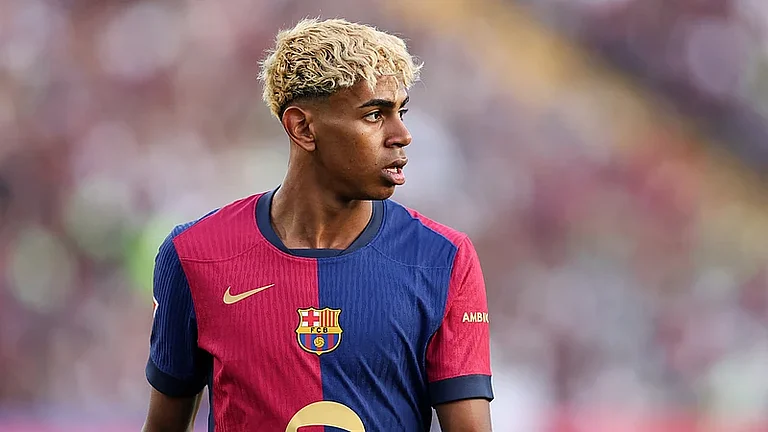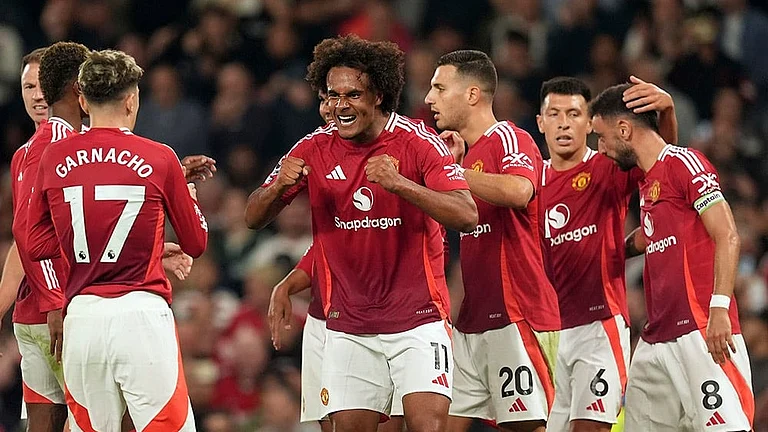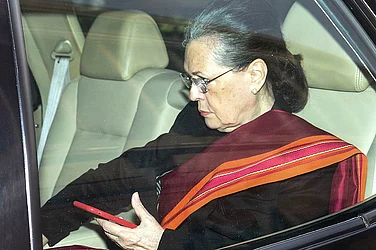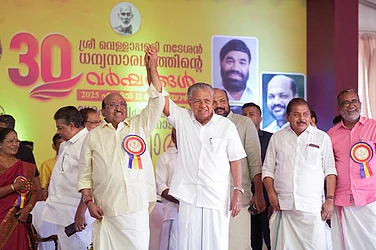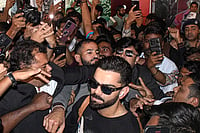How to envision the solidarity of Dalit-Bahujan-Adivasi-Vimukt and gender-fluid persons from within these marginalised spaces? I could not write this piece on intersectional feminism—flowing organically from those Dalit and marginalised spaces—without talking of its very antithesis. It’s the shadow that stalks them: the long, bloody history of caste-based sexual violence Dalits have suffered historically, and in the wake of the ongoing state-sponsored, state-sanctioned violence inflicted on Dalit and marginalised bodies.
In such troubling times, it behoves us to recall the legacy of the struggles for dignity and justice. Anti-caste movements have fought a long battle against the tyrannical Brahminical state and its historical predecessors for centuries, and critical knowledge has emerged through this praxis. For example, 19th-century social reformers like the Phules, Savitri and Jyotiba, started schools for the ‘Untouchable’ castes and women, the two structurally oppressed groups in a Hindu society steeped in casteist patriarchy. What did this entail for these two groups? It was the start of the revolution.
ALSO READ: The Hateras And Us
As early as 1855 itself, a Phule student, Mukta Salve, wrote about the plight of the Mahars and Mangs under Brahminical tyranny. She was the first young Dalit girl to perform this act of critical discourse: in her short piece, she spoke of the multiple burdens Dalit women faced, the precarious condition in which Mahar and Mang women gave birth, with no roof over their heads and no medical care. She wrote passionately on the wretched lives of the toiling Untouchable men, and children who had begun to gain education, and as a result, she argued, reduce the violence inflicted on them. Tarabai Shinde, an associate of Phule and a founding member of Phule’s Satyashodhak Samaj, wrote a booklet critiquing the patriarchal ethos of Hinduism. It was called Stree-Purush Tulna—that is, A Comparison of Man and Woman. Remember, this was in the year 1892! Although there’s evidence of only these two texts, they are nevertheless testimonies to the knowledge that emerged from the margins—intersectional knowledge.
In Indian history, the mid-19th-century era is marked by a wave of social reforms to curtail the gender-based violence embedded in traditions such as sati and child marriage, and promote women’s education and widow remarriage. Most of these reforms were the results of Christian missionary efforts and led by Indian men. However, as the Hindu nationalist movement for freedom grew, Hindu women tended to lapse into the role of the ‘ideal woman’, supporting the fight for independence alongside their men. They did participate in public acts, but without questioning the Hindu morality that obliged her to symbolise purity, as a sacrificing and patient figure. Even in that subservient role, privileged-caste Hindu women, especially those who came to engage with politics owing to family ties, gained positions of power. What that did effectively is to maintain a deep order, while allowing a surface reformism.
ALSO READ: Red Earth And The Sky A Dalit Blue
Although caste guided every dealing of Hindu society, the caste question did not at all emerge in the feminist movement in newly independent India, even from women in the Communist movement. India’s feminist revolution remained blind to how patriarchy and control over women’s sexuality are essentially tools to maintain the caste hierarchy. And that, for women’s liberation, the dismantling of caste is equally necessary. From the intersectionality viewpoints, caste and gender mutually concretise a new tier of oppression for those at the bottom of the hierarchy. This diversity in women’s experience of patriarchy remained totally unexplored, as feminism chased universal categories pertaining to ‘womanhood’.
ALSO READ: The Ghost Of Manu
Indian feminism’s third phase focused on legal interventions against violence, following the ‘third wave’ of western feminism. But again, these did not cover caste-based sexual violence—the repercussions can be seen in the ongoing miscarriage of justice in cases relating to Dalit victims. With their silence against caste-based violence, the feminist movement, rooted in elite and privileged caste perspectives, has been complacent with the Brahminical patriarchal state. It’s only the continuous labour of calling out such silence that has opened up new pathways to building solidarities. It’s in the nascent stages, but elite urban feminists have primarily remained frozen in guilt or wilfully ignorant.
ALSO READ: Casteaways
The three phases of Indian feminist history—or the three waves of western feminism—thus do not explain or relate to the struggles and fights of marginalised women, who were also producing knowledge of their own even as those grand phases and waves were ‘falling and rising’. A chronological retelling of history that fetishises the grand narratives invisibilises the critical knowledge that questioned those narratives. Gopal Guru calls these women from margins “labouring intellectuals”. In the West or in India, feminism still does not have the language to document and narrate knowledge emerging in the margins. It is only in anti-caste discourse that we see the potential emerging to theorise the knowledge of labouring intellectuals.
ALSO READ: Politics As A Sedative
In the last two decades, Dalit women embraced intersectionality in their activism as they share a bond of solidarity with the Black feminist movement—the very space in which intersectionality emerged as a powerful analytical lens. Intersectionality is a tool to analyse and explain how the multiple oppressions that attend to some identities—say, being a Dalit and a woman and queer—mutually co-create new forms of oppression. It goes beyond analysis and becomes an anthem, a campaign for visibility—and crucially, a tool for solidarity politics. It becomes naturally and organically inclusive.
ALSO READ: Media’s Conspiracy Of Silence
Ange-Marie Hancock, a Black feminist scholar, for instance argues that ‘intersectionality-like thought’ has existed worldwide, especially in the Global South. In constructing an intellectual history of intersectionality, she follows the ethics of literacy stewardship. Instead of claiming ‘ownership’ over intersectional knowledge production—say, as knowledge that emerged only in the Black movement—she says such knowledge has always existed and emerged in marginalised spaces. Tracing their genealogy means visibilising intersectionality’s diverse origins, not limiting it to one space, time or person. She passes on the knowledge of these global literacy stewards who built the intersectional wisdom that the present generation can apply in understanding their contemporary world. She lengthens the historical arc of intersectionality from Kimberly Crenshaw, who coined the term in the late 1980s, all the way back to the early 19th century figure of Maria Stewart. In 1831 itself, in her writings on the ‘unique’ challenges faced by Black women, Stewart was speaking of the power differentials among women, based on racial disparities, and among Blacks, based on gender. Patricia Hill Collins also acknowledges intersectional knowledge produced in other parts of the world—she sees Savitri Phule’s work on women’s education, and her writings, as deeply intersectional. This generosity, humility and ethics of knowledge production that Hancock and Collins work with showcase their intersectional praxis and commitment to building intersectional solidarity. This resonates with the oral history tradition of Dalit-anti-caste communities of knowledge. Intersectionality thus emerges as an important tool for Dalit anti-caste theory and praxis.
Having said this, Dalit-Bahujan communities have a challenge in front of them. The diverse marginalised communities have carved a collective identity under the anti-caste rubric. However, there is a need for a serious dialogue to strengthen these solidarities. Being oppressed does not immunise a community from internalising the oppressors’ philosophy and becoming victim to mental slavery. The revolutionaries of the previous era cautioned us against this. Men and women of the Dalit-Bahujan communities need to engage in a critical quest to explore and understand how patriarchy and caste-based mindsets within can affect us and hinder us from evolving further into a political and intellectual force. Dalit men—activists, leaders, intellectuals—need to participate in respectful, collaborative retrospection on how they have dealt with gender oppression and women’s leadership within our communities. Honest reflexivity is called for here. Have our own privileges and complacency made us ignore the most marginalised, stopped us from building solidarities? To answer that, think intersectionally.
***

Ramya Haridas
Dalit MP (Congress) from Kerala
All political parties have to be blamed for not giving enough representation to Dalit women. Even mainstream parties are reluctant to debate the Women’s Reservation Bill. How will they accommodate Dalit women? Crimes against Dalit women are not discussed enough in Parliament. While I raised the Unnao rape case in Lok Sabha, I was interrupted by woman leaders. We can’t wipe out the caste structure in a day. We have to get to the problem’s roots and eliminate them. We need to address landlessness and lack of education among Dalits.
(Swati Kamble, a PhD scholar at the University of Geneva, is a Dalit-Bahujan activist and intersectional feminist. Views are personal.)







